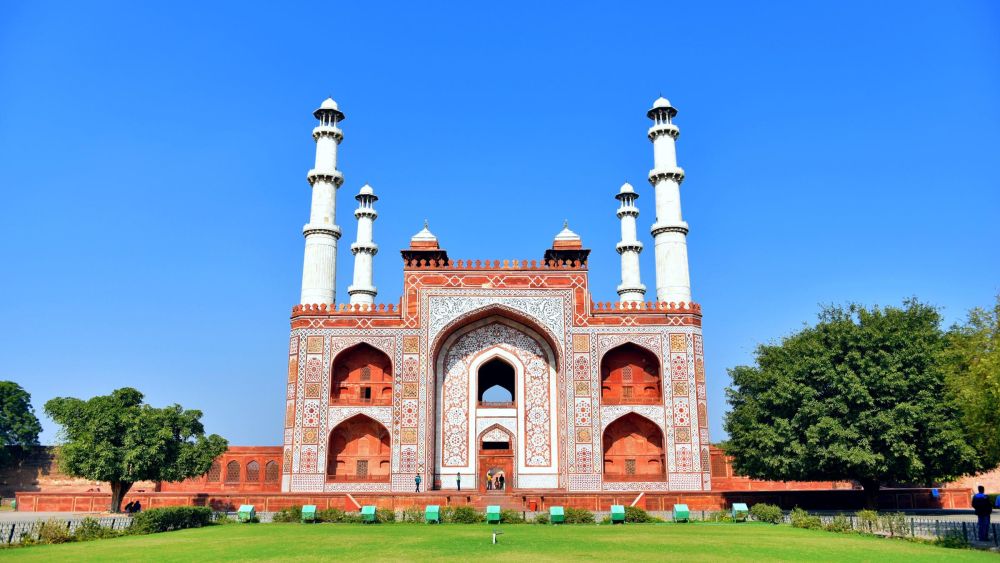

Akbar's Tomb, located in Sikandra, on the outskirts of Agra, is a significant monument of Mughal architecture. The third Mughal emperor, Akbar the Great, himself commenced its construction in 1600, and after his death in 1605, his son Jahangir completed it in 1613. This tomb reflects Akbar's philosophy and secular outlook, combining various architectural styles, including Hindu, Christian, Islamic, Buddhist, and Jain motifs. Akbar's Tomb is a notable example of Mughal art and architecture before the construction of the famous Taj Mahal.
The site has been a tourist attraction for centuries, especially after the British period when travel became more accessible. It was during the British Raj that preservation efforts began in earnest and historical sites like Akbar's Tomb started attracting international visitors. Since India's independence in 1947, efforts to maintain and restore historic monuments, including Akbar's Tomb, have made it an integral part of India's cultural heritage and tourism portfolio.
Tourists from all over the world visit Akbar's Tomb to admire its splendid architecture, the intricate carvings, and the beautiful gardens that surround it—often called the Charbagh, following a typical Mughal garden layout. The tomb is a five-tiered pyramid, topped by a marble pavilion containing the false tomb of Akbar, with the true tomb lying in the basement.
The latest trends in tourism at Akbar's Tomb include the use of technology for enhanced visitor experiences. Augmented reality apps are beginning to offer virtual guides and historical reconstructions of the sites. Additionally, there is a focus on sustainable tourism, with initiatives to keep the site and surrounding areas clean and eco-friendly. The Indian government and local agencies are also promoting the Golden Triangle tourist circuit, comprising Agra, Delhi, and Jaipur, where Akbar's Tomb is a highlighted attraction.
Akbar's Tomb stands not only as a testament to the great Mughal emperor but also as a confluence of various cultural elements. Its historical and architectural significance continue to fascinate researchers and tourists alike. As tourism evolves, Akbar's Tomb remains a steadfast beacon of India's rich heritage.